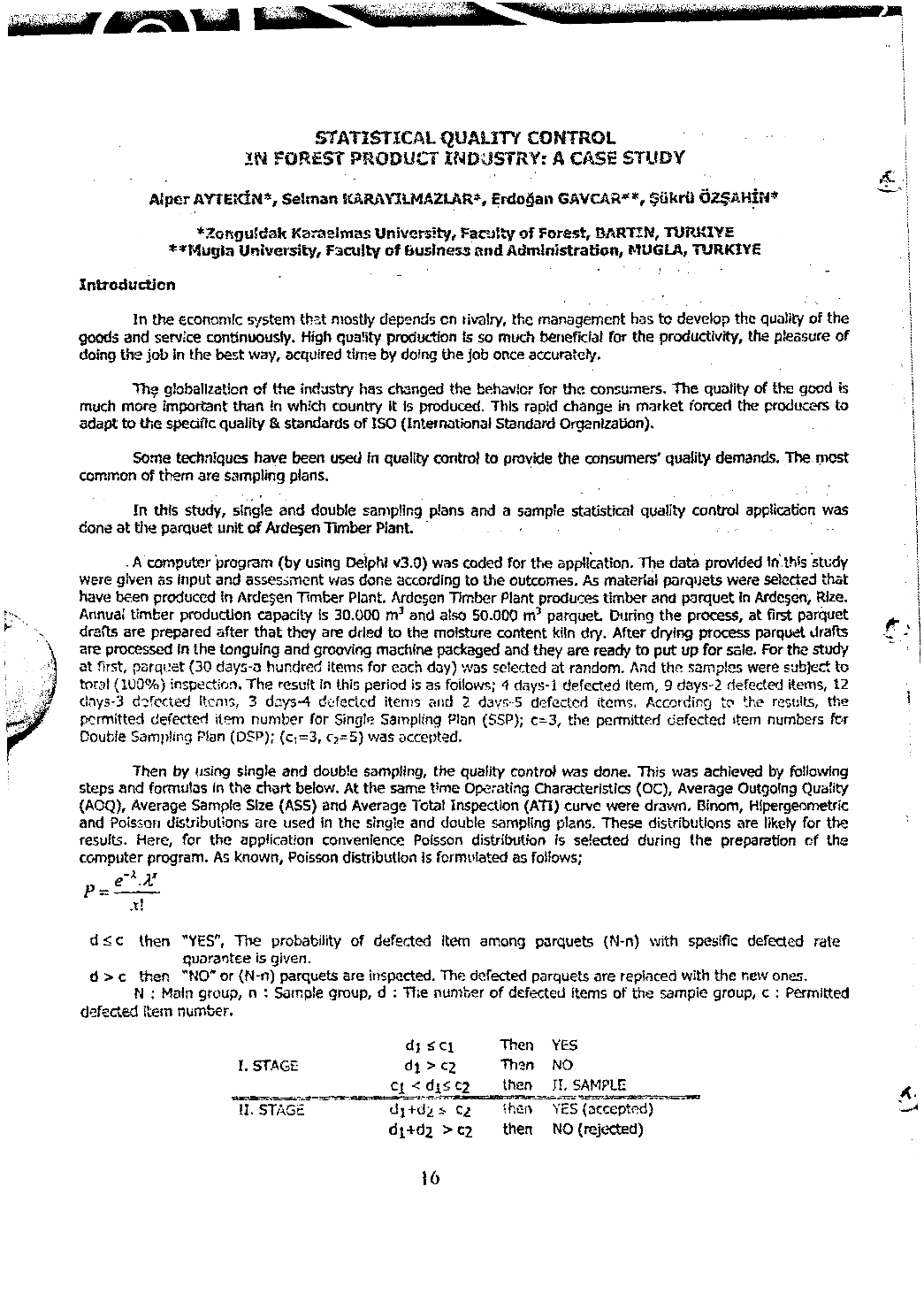

STATISTICAL QUALITY CONTROL
m
FOREST PRODUCT INDUSTRY: A CASH STUDY
Atper AYTEKXN*, Seiman KARAYILMAZLAR*, £reio£ati 6AVCAR**, $tikrii OZ^AHIN*
*£onguSdak Karaelmas University, Vacuity of Forest, BARTIW, TURK1YE
**Mugla University, Faculty of business and Administration, MU6LA, TURKIYE
Introduction
In the economic system that mostly depends on rivalry, the management has to develop the quality of the
goods and service continuously. High quality production
Is
so much beneficial for the productivity, the pleasure of
doing the job in the best way, acquired time by doing the job once accurately.
The globalization of the industry has changed the behavior for the consumers. The quality of the good is
much more important than in which country it is produced. This rapid change in market forced the producers to
adapt to the specific quality &standards of ISO (International Standard Organization).
Some techniques have been used in quality control to provide the consumers' quality demands. The most
common of them are sampling plans.
In this study, single and double sampling plans and a sample statistical quality control application was
done at the parquet unit of Arde§en Timber Plant.
.A computer program (by using Delphi v3.0) was coded for the application. The data provided In.this study
were given as input and assessment was done according to the outcomes. As material parquets were selected that
have been produced in Arde§en Timber Plant. Ardc§en Timber Plant produces timber and parquet in Arde§en, Rize.
Annual timber production capacity is 30.000 m3 and also 50.000 m3 parquet. During the process, at first parquet
drafts are prepared after that they are dried to the moisture content kiln dry. After drying process parquet drafts
are processed In the tonguing and grooving machine packaged and they are ready to put up for sate. For the study
at first, parquet (30 days-а hundred items for each day) was selected at random. And the samples were subject to
total (100%) inspection. The result in this period is as follows; -t days-1 defected item, 9 days- 2 defected items, 12
doys-3 defected Rems, 3 days-4 defected items and
2
days-5 defected items. According to the results, the
permitted defected item numtjer for Single Sampling Pian (SSP); c=3, the permitted defected item numbers for
Double Sampling Plan (DSP); (ct=3,
c?~
5) was accepted.
Then toy
using single and double sampling, the quality control was done. This was achieved by following
steps and formulas fn the chart below. At the same time Operating Characteristics (OC), Average Outgoing Qualify
(AOQ), Average Sample Size (ASS) and Average Total Inspection (ATI) curve were drawn. Binom, Hipergeometric
and Poisson distributions are used in the single and double sampling plans. These distributions are likely for the
results. Here, for the application convenience Poisson distribution is selected during the preparation of the
computer program. As known, Poisson distribution is formulated as follows;
d < c then "YES", The probability of defected item among parquets (N-п) with specific defected rate
guarantee is given.
d > c then WNQ* or (N-n) parquets are inspected. The defected parquets are replaced with the new ones.
N ; Main group, n : Sample group, d : The number of defected items of the sample group, c : Permitted
defected item number.
I. STAGE
U. STAGE
dj
S c i
Then YES
di > C
2
Then NO
ci c di^ C2
than II. SAMPLE
d i + d ^ Q
ihen YES (accepted)
di+d2 >C2
then NO (rejected)
16
Научная электронная библиотека ЦНСХБ









